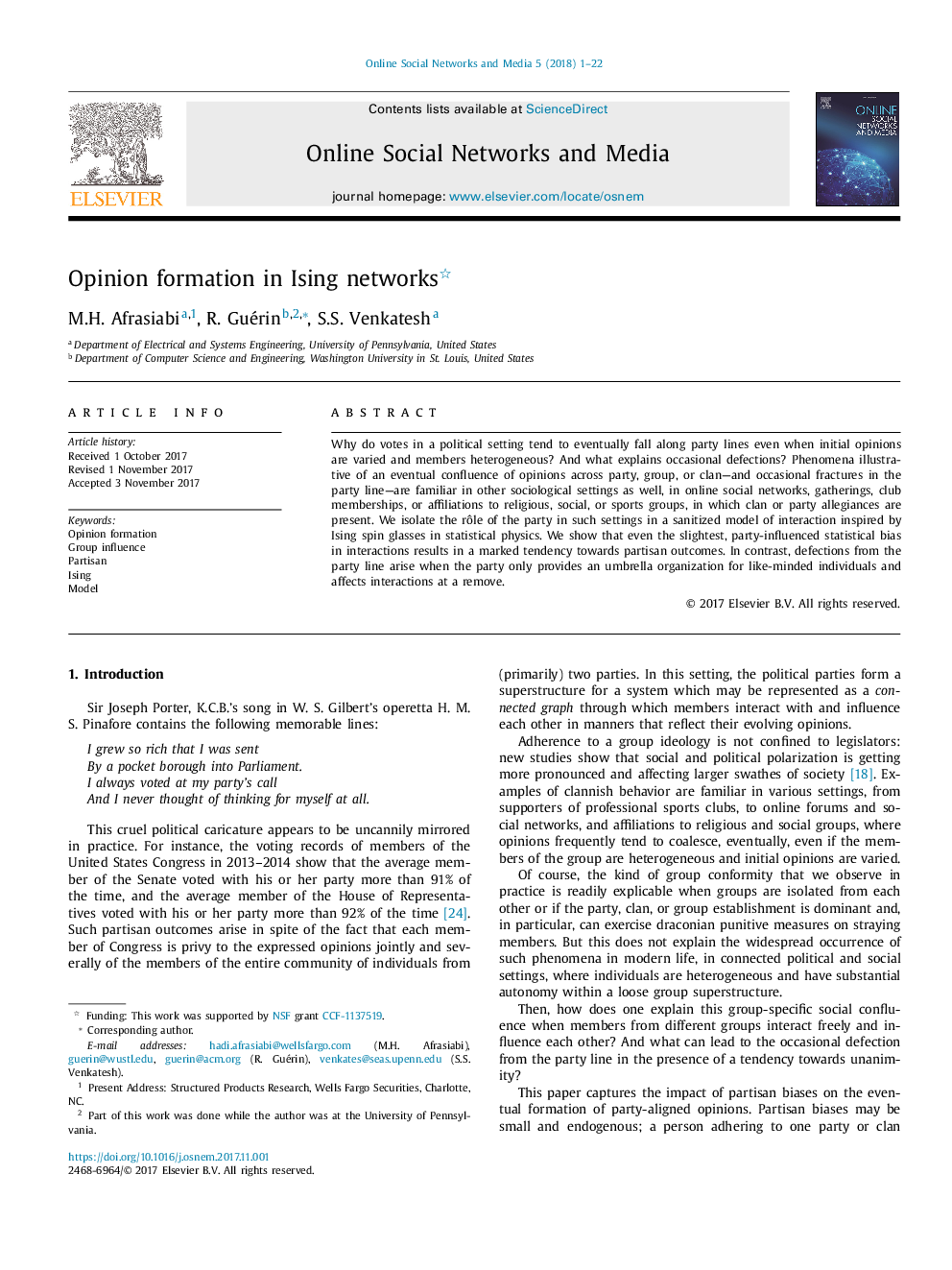| Article ID | Journal | Published Year | Pages | File Type |
|---|---|---|---|---|
| 8917959 | Online Social Networks and Media | 2018 | 22 Pages |
Abstract
Why do votes in a political setting tend to eventually fall along party lines even when initial opinions are varied and members heterogeneous? And what explains occasional defections? Phenomena illustrative of an eventual confluence of opinions across party, group, or clan-and occasional fractures in the party line-are familiar in other sociological settings as well, in online social networks, gatherings, club memberships, or affiliations to religious, social, or sports groups, in which clan or party allegiances are present. We isolate the rôle of the party in such settings in a sanitized model of interaction inspired by Ising spin glasses in statistical physics. We show that even the slightest, party-influenced statistical bias in interactions results in a marked tendency towards partisan outcomes. In contrast, defections from the party line arise when the party only provides an umbrella organization for like-minded individuals and affects interactions at a remove.
Related Topics
Physical Sciences and Engineering
Computer Science
Computer Networks and Communications
Authors
M.H. Afrasiabi, R. Guérin, S.S. Venkatesh,
